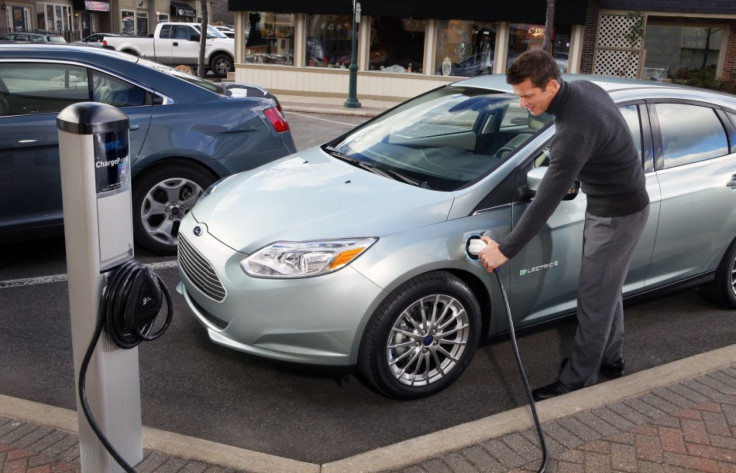2012 Ford Focus Electric Review: Silent, Quick and Efficient

Ford Motor Co. trotted out some brand, spanking new 2012 Ford Focus Electric cars in New York on Tuesday for a first round of test driving, and the new all-electric car certainly seems to meet Ford's twin goals of high fuel-economy with a positive driving experience.
The biggest lesson from our first drive of the 2012 Ford Focus Electric is that it is surprisingly engaging and fun to drive, but the silence and smoothness of the ride can be creepy for a driver used to the rumble of a gasoline engine and the feeling of gears shifting.
The new electric car from Ford is limited to a top speed of 84 mph, but in city traffic it felt quick. The electric motor of the 2012 Focus Electric gives it virtually instantaneous maximum torque all the way up to 80 mph, which means that at normal driving speeds, the car feels extremely responsive and quick.
The interior is well trimmed, with many of the interior materials made from recycled products. The seat fabric, for instance, started life as post-consumer plastic bottles. If you didn't know, though, you wouldn't be able to tell. The car is comfortable, though it does not feel particularly luxurious, and the suite of navigation and tech integration is comprehensive.
The 2012 Focus Electric's biggest selling point, of course, is the gas mileage, without gas. Ford says it will get an overall 105 miles per gallon equivalent -- 110 mpge in the city and 99 on the highway. (Based on one gallon of gasoline equaling 33 kilowatts.)
The car will have a range of approximately 100 miles depending on outside temperature and driver habits. The battery is liquid heated and cooled to maximize driving distance, though, and Ford has created an engaging driver coach to help maximize dynamic braking.
Ford's also proud of the charging time of just three to four hours using a 240V fast charger for the all-electric car, and the company could not help but take a swipe at the Nissan Leaf on this point.
The 2012 Focus Electric will recharge in nearly half the time of the Nissan Leaf, a company press release said.
Ford is targeting buyers who own smartphones, are tech savvy, but want their car to make a difference, Eric Kuehn, chief nameplate engineer for the Ford Focus Electric, said Tuesday.
A major feature of the 2012 Focus Electric is how it incorporates smartphone technology. Drivers can use Ford's MyFord Mobile app to connect to their car remotely using a smartphone, and they can program the car to charge at optimal times for power-cost, or to charge more quickly or more slowly. Likewise, they can preset a trip plan on their phone and send it to the car, monitor their current charge level and range, and set the car to precondition the battery and cabin by warming or cooling them before departure.
The 2012 Focus Electric is currently the only all-electric car on the market with liquid cooling and heating, although the Chevy Volt also has the technology, and Tesla plans to have it on its Model S.
Ford is working with a business plan under which consumers can pick a drive train based on their driving habits, with choices ranging from Eco Boost gasoline engines to hybrids, plug-in hybrids, and electric-only vehicles like the new 2012 Focus Electric. To do this, Ford is hoping to target their driving behavior, so that buyers can go to a dealership, describe what they need a car to do and then buy a car based on those specifications without having to look to just one architecture, Kuehn said.
Basically, Ford wants buyers to have multiple versions of each model to choose from, depending on their need. The consumers that Ford is targeting with the 2012 Focus Electric will not necessarily want to be seen as green, rather that they made a smart decision, Kuehn said.
The 2012 Focus Electric will cost $32,495 after federal tax rebates, and it could be less than $30,000 in some states like California, depending on their incentives to buyers. Ford began taking orders for the car in November. Dealer availability of the car will be limited to markets in California, New York and New Jersey in the first half of 2012, and will expand to 19 U.S. markets by the end of the year.
© Copyright IBTimes 2025. All rights reserved.





















